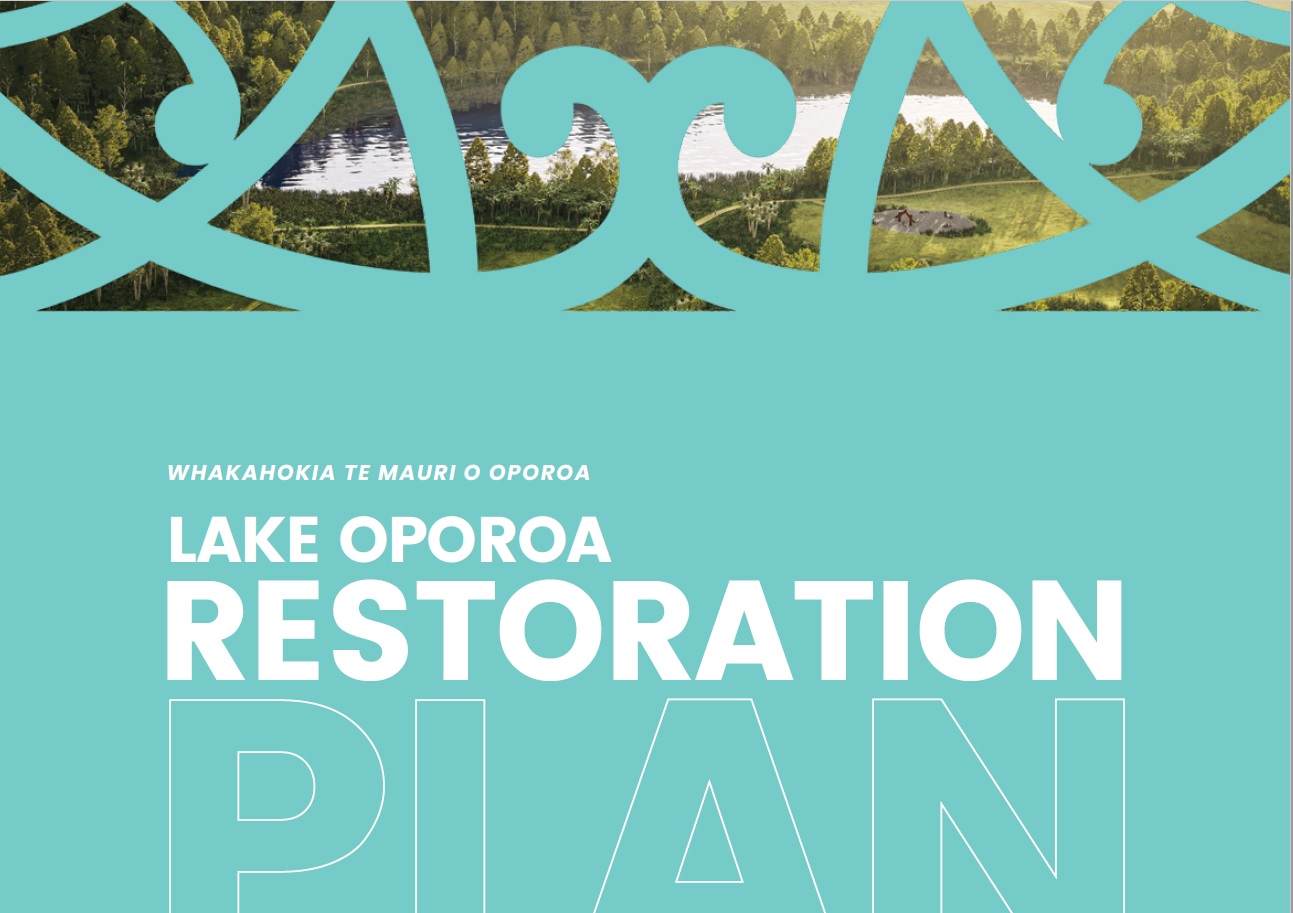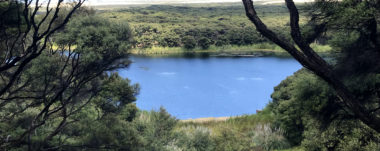– John Pearman – Molecular Ecologist, Cawthron Institute
It had all started two weeks earlier when I arrived in New Zealand to start my career at Cawthron. Now I was heading south for my first experience of sampling the lakes of New Zealand in Southland.
My first experience of the sampling was an early morning start to meet the helicopters that would take us up towards the alpine zone and the first lake of the day. We rose up over the mountains with lakes emerging in the bottom of the valleys.

After a short flight we descended through the clouds and set down next to the lake side. We wrapped up warm to protect against the morning chill and as soon as the sling arrived with our equipment we got down to the business of constructing the inflatable boats. It was not long before the sun broke through the cloud, allowing the far side of the lake to be observed and a sweat to be brought about as we prepared for the upcoming paddle. With the sun beating down, the only similarity to my previous sampling experiences in Saudi Arabia, the smaller inflatable was the first to venture out onto the water. After a bit of paddling around, not quite in circles but almost, the deepest part of the lake was identified and the larger inflatable (Kea), on which the coring took place, maneuvered into position. While those on the coring boat used their brawn to tap the corers into the sediment the action on the smaller boat was slightly more sedate taking samples for water quality analysis. These included: nutrients, total and dissolved organic carbon and trace metals as well samples for zooplankton and phytoplankton. Finally, not to miss out on the fun of playing with sediments, a ponar was deployed to sample surface sediments. With the all samples on board and the coring team having pulled up four cores it was time to head back to shore and collapse and clean the equipment before the short, yet scenic, hop across to the second lake of the day where the whole process was repeated.

A speck in the vast expanse. The coring boat positioned at the deepest part of the Lake Roe to collect sediment cores.
The next couple of sampling days took place on more lowland and potentially anthropogenically impacted lakes. These two lakes were situated on farms in the Te Anau region and would provide a variety in the lake conditions sampled when considered alongside those in the alpine zone. At the first lake after meeting the farm owner and discussing his philosophy on farming and taking advantage of his local knowledge of the system the team headed down to the lake, hefted the equipment over the barbed wire protecting the lake and started unintentionally chasing the paradise shelducks around the lake in the name of science. The second lake down in the lowlands followed a similar procedure, although without the shelducks leading the way. In preparation for heading back up into the mountains a healthy dose of bleach was used to make sure the equipment was extra clean so as to avoid cross contamination of the delicate systems.
The next day started with another scenic helicopter trip (note to any budding future (or current) scientists out there…. choose your sampling field sites well). The team settled into the pattern of constructing, the boats, sampling and then dismantling and cleaning the inflatables and another two lakes were ticked off.
The next day though was not quite as uneventful. Firstly, the first lake sampled had a sandy beach from which the boats were launched. It was also the first time I had properly been stationed on the coring boat and had to use muscles that had long been forgotten about. Four cores later and am arms wondering what I had against them, we started the paddle back to shore into the strengthening breeze just to make sure that the upper body had had a proper work out and arrived just in time for the what seemed like lunchtime for the sandflies. The second lake was to bring the true excitement and will go down in Lakes380 folklore as the lake of the flying eel. The sampling went off without a hitch, with some good 1.8 m + cores obtained. As the boats were dismantled and cleaned, Jamie was down at the water edge cleaning his gloves when a post watershed shout was heard. An eel was seen gracefully arcing through the air, a position it was most likely unfamiliar with, before gravity got the better of the situation and the eel landed in the grass. It turned out that the eel had decided to take an opportunistic nibble at Jamie’s finger and this had led to the spontaneous flight lessons for the eel. The good news though is that after the recovery from the shock and disbelief both the finger and eel survived the episode.

The next lake to be sampled brought its own perils. Those of frisbees as equipment was carried across a frisbee golf course in Te Anau. Luckily this time no one was hurt in the pursuit of science and the sampling of the small Lake Henry proceeded with no dramas.
The last lake of my time in Southland also happened to be the most scenic and deepest I had sampled. The helicopter flight brought us into a bowl with steep sides encompassing most of the lake.

With Kea’s circling above the boats headed out onto the tranquil lake and started to sample the 50 m water column to obtain the water quality samples as those on the coring boat heaved up four long cores from the depths. With the sampling complete for my time in Southland all that was required now was to pack up and have one final scenic helicopter ride back.
















